

I did my maggie designs around the optimal design equations published by A.C.M. de Queiroz. His design method describes any magnifier alignment by a set of three whole numbers, which define the ratio of the frequencies of the three resonant modes. (BTW: The resonant modes are not the same as the free resonances of the individual coils.)
I did the calculations for modes 1:2:3 and 2:3:4. 1:2:3 gives the fastest energy transfer, but develops a high voltage across the secondary coil, hence corona losses could be large. The coupling also needs to be very high, which makes flashover likely. 2:3:4 has more modest voltage and coupling requirements, and still achieves transfer in 1.5 cycles.
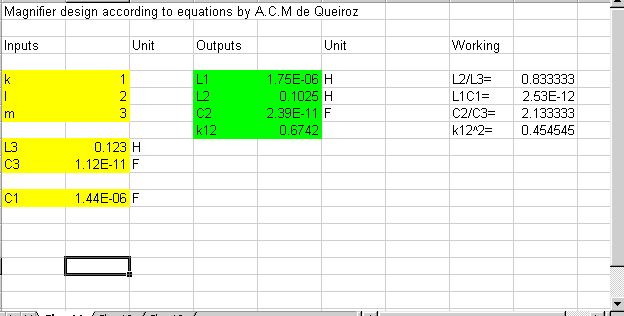
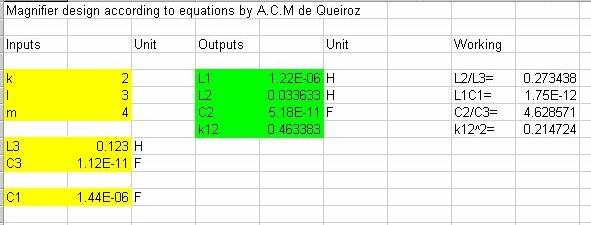
The next step was to simulate the 2:3:4 magnifier circuit in PSpice.
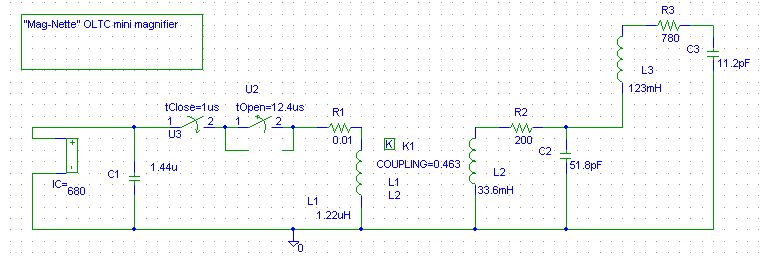
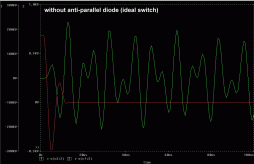
Without diode |
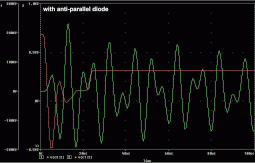
With diode |
This could be solved by using two IGBTs in a series C-E-E-C configuration, but this leads to increased losses, compared to the case where the two IGBTs are connected in parallel in a 2-coil system. Alternatively, the system could still be operated in spite of the suck-back, as even quite a large suck-back in voltage terms means little in energy terms. But, this would greatly complicate the design and operation of the capacitor charging circuit.
The nail in the coffin of this project, though, was Terry Fritz's experimental evidence that his magnifier, optimised according to the theory by Queiroz et al., performed slightly worse than his 2-coil system of the same bang size and break rate, and similar dimensions.
So, I stopped work on the OLTC magnifier, and decided to build a large 2-coil OLTC instead. See the Tesla Four section of this site for details of this project.